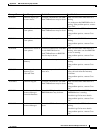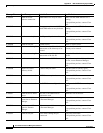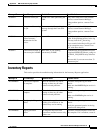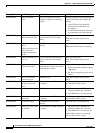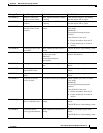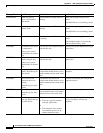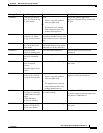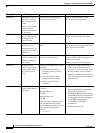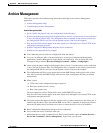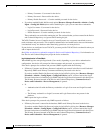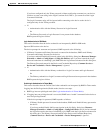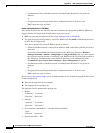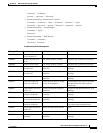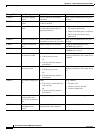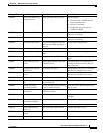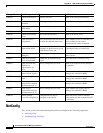
A-21
User Guide for Resource Manager Essentials 4.1
OL-11714-01
Appendix A RME Troubleshooting Tips and FAQs
Archive Management
Archive Management
This section provides the troubleshooting information and FAQs for the Archive Management
application:
• Archive Management FAQs
• Troubleshooting Archive Management
Archive Management FAQs
• Q.Can I define the protocol order for configuration fetch and deploy?
• Q.I have set up the purge setting for configuration files to retain 3 versions and no version older than
5 days. This purge job runs daily. The configuration files are deleted for the selected versions but
the configuration diff files still exist for the deleted versions. Why does this happen?
• Why does the Telnet session appear in the data capture trace although I have selected TFTP as the
configuration transport protocol?
• Q.How Configuration Management interprets device credentials?
• Q.What are the supported device prompts?
Q.
Can I define the protocol order for configuration fetch and deploy?
A.
Yes, you can define the order of protocol that has to be used for Configuration Management
applications (Archive Management, Config Editor, and NetConfig). You can define this in the
Transport Settings window (Resource Manager Essentials > Admin > Config Mgmt).
Q.
I have set up the purge setting for configuration files to retain 3 versions and no version older than
5 days. This purge job runs daily. The configuration files are deleted for the selected versions but
the configuration diff files still exist for the deleted versions. Why does this happen?
A.
The configuration diff files are not purged because the RME Change Audit records refer to these
files. After you delete the RME Change Audit records, these configuration diff files get deleted
automatically.
Q.
When I select:
a. TFTP alone as the configuration transport protocol
b. Run Sync Archive Job for a device
c. Run a data capture trace
The data capture trace shows Telnet traffic along with SNMP/TFTP sessions.
Why does the Telnet session appear in the data capture trace although I have selected TFTP as the
configuration transport protocol?
Q.
The Telnet session that appears in the data capture trace is a socket connection to the Telnet port. It
identifies the IP address of the CiscoWorks RME server. This is important in multi-homed servers
where the IP address that CiscoWorks server uses to contact the device, has to be identified.
Q.
How Configuration Management interprets device credentials?
A.
You can enter the device credentials when you,
• Add/import devices using Common Services Device and Credential option (Common Services >
Device and Credentials > Device Management). In this flow, you can enter:



